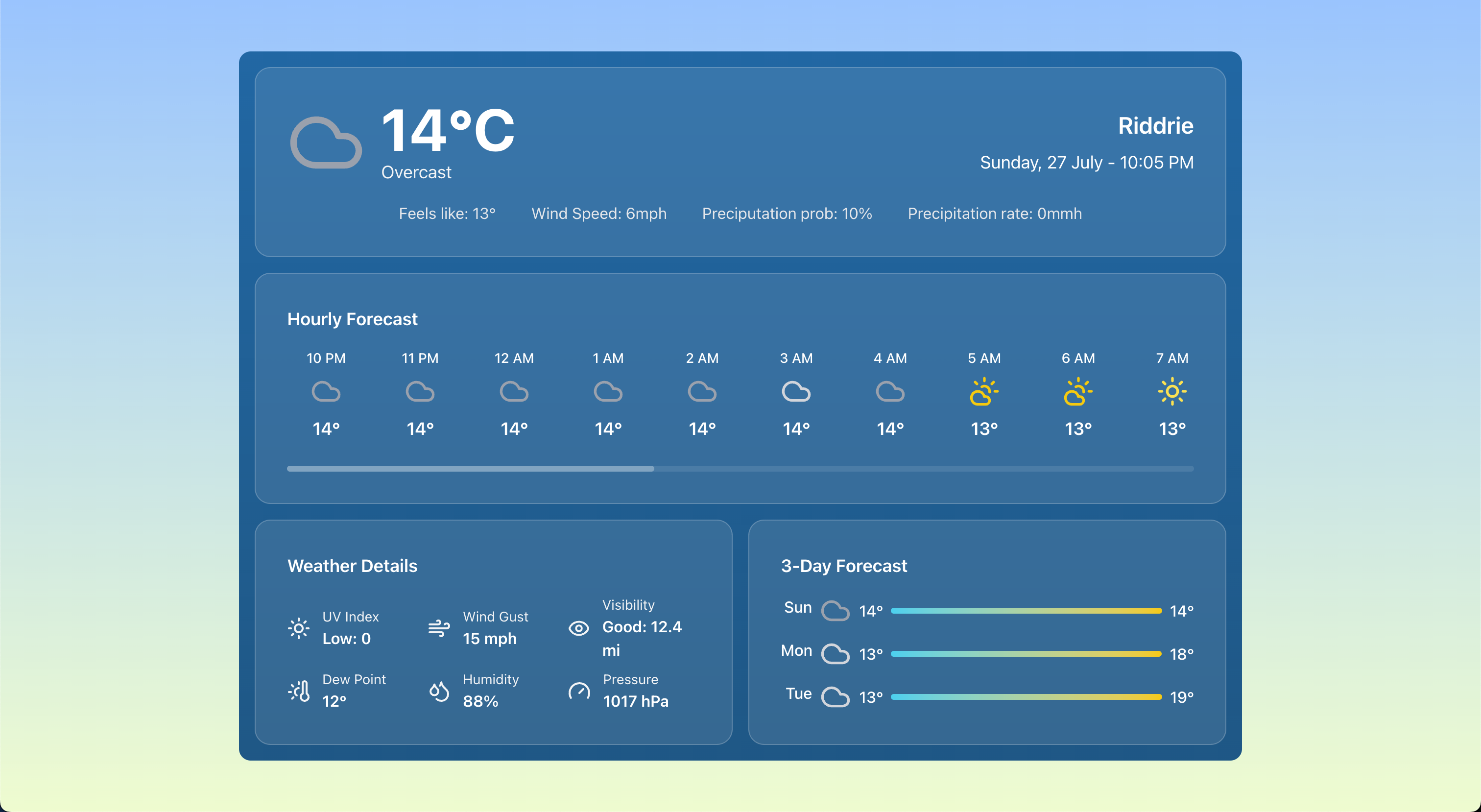Met Office
Weather App
An intuitive Web App to check the weather using the Met Office's API.

Met Office | Weather App UI Screenshot
Project Overview
This project involved designing an intuitive UI for a weather forecast web application that uses the Met Office's API to provide real-time weather information. The application features automatic geolocation detection, dynamic weather icons, and a user-friendly interface, making it easy for users to check the weather conditions in their local area.
Built with React, the interface communicates with the back end's API via https requests (visit Full Stack API for more details). It also incorporates best practices in software development, including version control with Git and deployment on Azure.
As the sole creator, I was responsible for all aspects of the project, from initial concept and design to development, deployment, and maintenance.